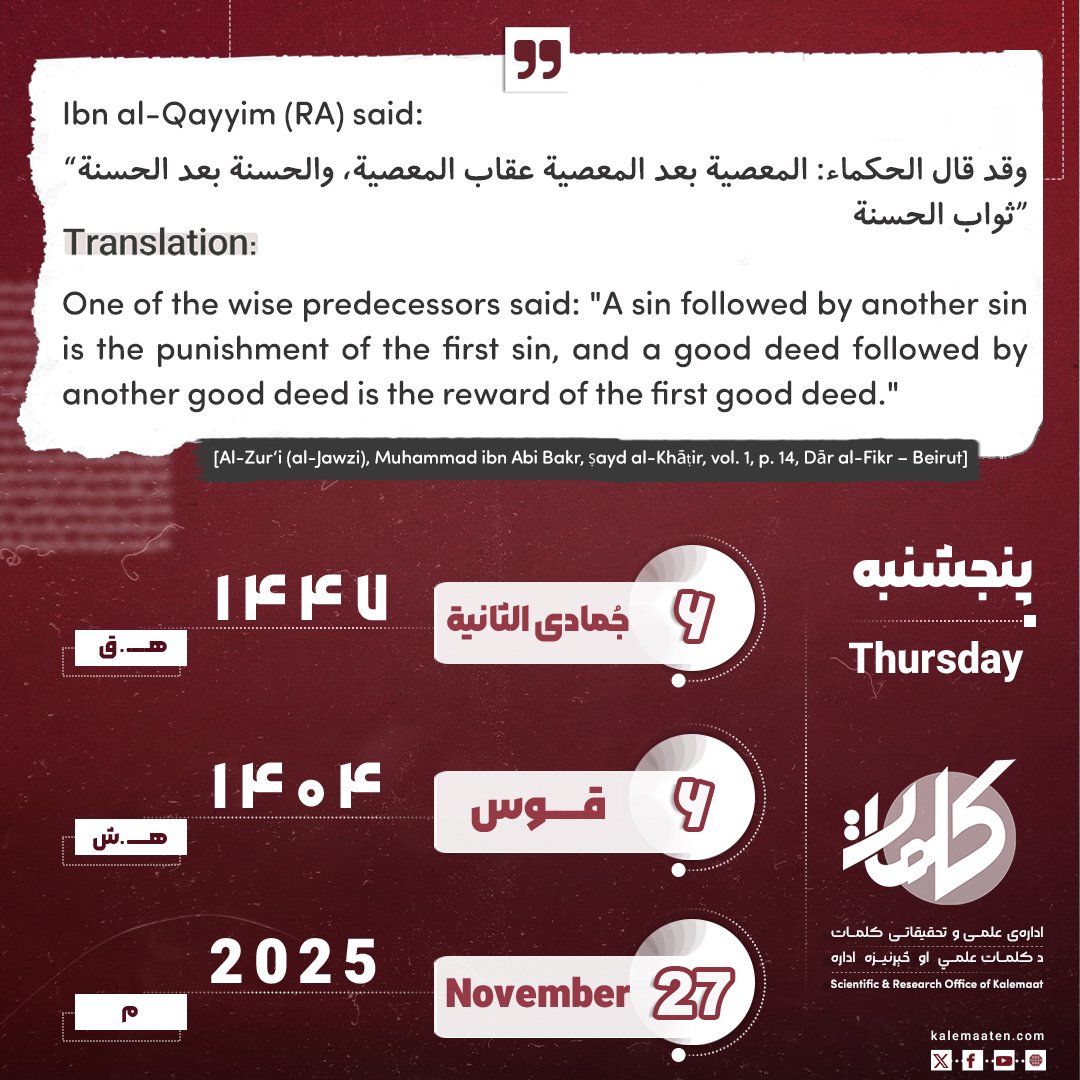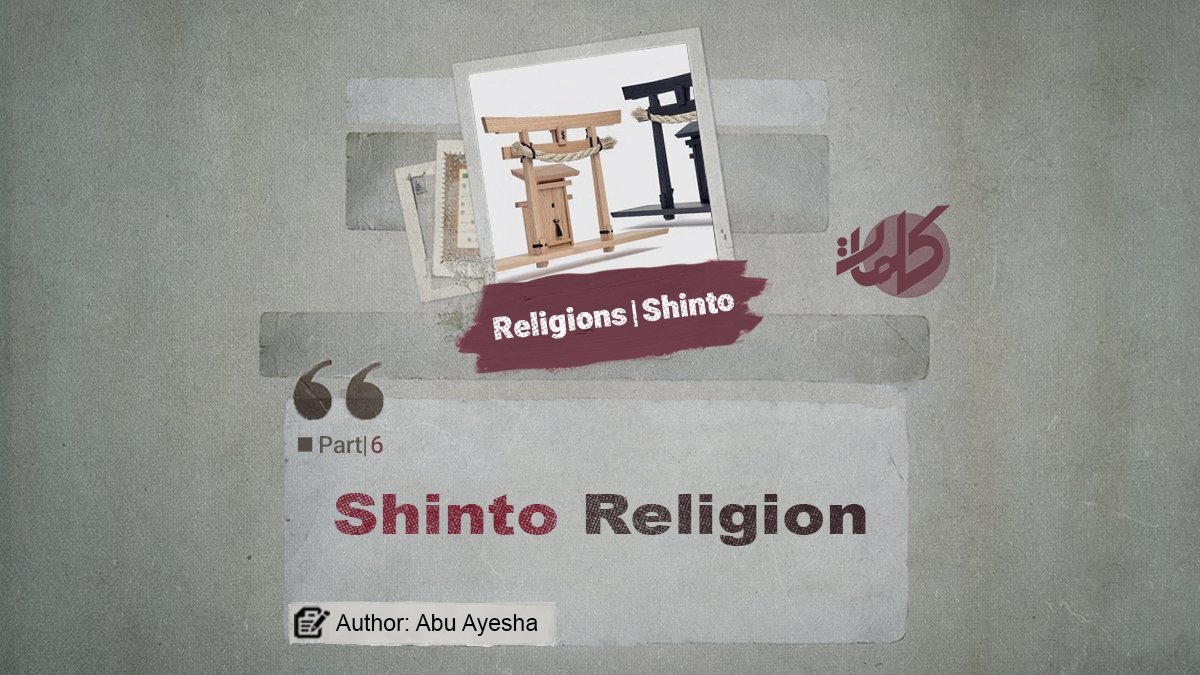Author: Abu Ayesha
Shinto Religion (Part 6)
Types of Kami
In various sources, Kami are classified differently into several types; however, here we will address some of these types:
-
Kami of nature;
-
Ancestral Kami;
-
Kami related to human beings.
Countless efforts have been made to classify Kami from a phenomenological perspective. Most researchers speak of two types: Kami of nature and ancestral Kami, while others divide Kami into three types: family Kami, local Kami, and guardian Kami. However, it is noteworthy that most Kami cannot be confined to a single category but can simultaneously be considered in several categories. For example, most natural Kami can at the same time belong to the categories of ancestral Kami, family Kami, and guardian Kami.
Superiority of Heavenly Kami over Earthly Kami
The Japanese even distinguish among the Kami they have chosen as gods and deities, preferring some over others.
In the ancient Shinto faith, heavenly Kami were considered more valuable and sacred than earthly Kami and were symbolically sanctified with specific objects—such as the sanctification of the mirror, which is the symbol of the goddess Amaterasu[2], a practice that remains prevalent in Shinto shrines.[3]
The Number of Kami
The exact number of Kami in the Shinto religion is unknown, and sources report different things on this matter. Nevertheless, all sources agree that the number of Kami is indefinite and uncertain, and what has been mentioned involves possibilities of increase or decrease.
Shinto religious myths speak of “eight million” Kami, an expression symbolizing infinity, and continuously, from time to time, new groups of Kami emerge.[4]
This indicates that quantity is not a criterion among Kami, for enumeration and counting are impossible since new Kami constantly appear, making accessibility and calculation difficult. Thus, it can be said that their number is indeterminate.
The number of Kami is extremely large, to the extent that it is said there are eight million Kami in Japan, whose existence is firmly believed in. Collectively, Kami are also referred to as Yaozorō. Many of these Kami enjoy national popularity, while others are recognized only within rural communities and even families—so much so that each family may have its own ancestral Kami.[5]
Some say that “eight million Kami” is an expression for infinity,[6] because, as previously noted, most Japanese people have an ancestral Kami in their homes that they venerate and respect. From this, it becomes clear that the number of Kami is greater than what has been stated here, since Kami are not only in homes but also in shrines. Moreover, the Japanese call anything related to nature a Kami.
In a religion with such a vast number of Kami—gods and deities, according to the Japanese—one may wonder how people can worship. A close similarity can be found between these people and the Arabs of the Age of Ignorance (Jahiliyyah). Among the Arabs, every individual had his own special idol for worship, sometimes even family idols, and many idols were also placed in their temples, particularly in the Ka‘bah, which at that time housed hundreds of idols.
The Importance and Status of Kami in Shinto
Kami is the most important term in the Shinto faith. In Shinto, Kami holds a profoundly essential and sacred position. Indeed, understanding the Shinto religion is practically impossible without grasping the concept and status of Kami. The role of Kami in Shinto is such that the Japanese regard it as an inseparable part of their religion and daily life. Kami embody both positive and negative aspects and are highly regarded by the Japanese people.
The feeling of Shinto followers toward Kami is like the fear of a child who, after walking through a bright forest, suddenly finds himself before a dark cave covered with pine trees. They also worship their deceased and ancestors with such emotions. The deities—those above—are not only devoid of sacred breaths and lofty spirits but also possess abstract traits along with worldly, base characteristics. The myths of Kami-no-michi are generally concerned with natural and external events and never with internal or spiritual matters.
The status and significance of Kami among the Japanese is such that they believe human beings were created through Kami. All humans are children of Kami; they received their life from Kami, continue their existence through it, and each individual carries within himself a spark of Kami’s sacredness.[7]
The true Shinto faith has been and remains grounded in the belief that faith in a particular Kami is the path to happiness, and beyond the multiplicity of Kami, no monotheistic truth exists. Kami are abstract entities that respond to human prayers, and anyone, depending on his or her needs, can connect with one of them.[8]
Although Kami occupy a significant place among the Japanese and are considered sacred—sometimes invoked for fulfilling needs and establishing connections with them—some Kami are evil Kami that harm people. The Japanese fear them, and in order to ward off their harm, they offer prayers and hold rituals.
There are Kami who, when one seeks to avert their evil or calm their anger, instead cause harm and affliction. For this reason, to ward off evil and soothe their wrath, people present them with offerings, perform religious ceremonies, and turn to Shinto priests to conduct rituals for averting their evil.[9] They believe that even negative forces can be utilized for one’s benefit through proper worship. The hidden meaning in this belief is that the forces of nature—which they regard as Kami, gods, and deities—are both constructive and destructive, and that life encompasses harmony as well as discord, war as well as peace. The realm of supernatural spirits lies beyond human moral categories.[10]
Kami are not necessarily good. Within the ambiguity of the term “sacred,” they may embody both good and evil powers at once… Kami do not only encompass the “higher,” “magnificent,” and “benevolent,” but evil, dangerous, mysterious, and extraordinary beings are also Kami.[11]
Continues…
Previous Part/ Next Part
References
[1]. Farhang-e Japan (Japanese Culture), written by several anthropological and cultural thinkers, article author: Hamideh Amiryazdani, n.d., p. 113.
[2]. What kind of Kami Amaterasu is, what myths exist about her, what beliefs the Japanese hold regarding this (so-called) goddess, and how she originated, will be explained in the next section, God willing, since this (so-called) goddess holds great value for them.
[3]. Kojiki, the Sacred Book of the Shinto Religion, trans. Dr. Ehsan Moqaddas, 1st edition, Winter 2001 (Solar Hijri), p. 19.
[4]. Ibid., p. 19.
[5]. Mehrsa, Parvaneh, “Kami – Deities of Japan,” published on the Blue Scene website, n.d.
[6]. Farhang-e Japan (Japanese Culture), written by several anthropological and cultural thinkers, article author: Hamideh Amiryazdani, n.d., p. 113.
[7]. Al-Ta‘eb, Muhammad Shahin, article: Al-Shintuwiyyah, published on Al-Ta‘eb’s blog, n.d.
[8]. Ebrahim, Alireza, The Shinto Faith: A View from Above, n.d., p. 92.
[9]. Al-Sawwāḥ, Firas, Encyclopedia of the History of Religions, vol. 4, translators: Saif al-Din al-Qasir, Mahmoud Munqidh al-Hashimi, ‘Abd al-Razzaq al-‘Ali, Wafa’ Tuquz, 2017, p. 420.
[10]. Yusa, Michiko, Japanese Religions, trans. Hassan Afshar, 1st edition, 2003 (Solar Hijri 1382), p. 22.
[11]. Farhang-e Japan (Japanese Culture), written by several anthropological and cultural thinkers, article author: Hamideh Amiryazdani, n.d., p. 114.



